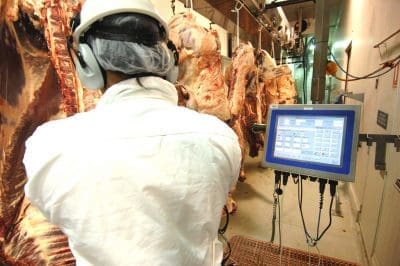Slaughter cattle grids across eastern Australia are now showing signs of softening, in the face of tough export meat trading conditions and a moderate rise in cattle supply.
Depending on location and cattle description, most direct consignment grids now appear to have softened by anywhere from 10c to 35c/kg dressed weight since the start of last week, in the first significant price adjustment in two and a half months.
 One large Queensland export processor lowered its offers on steers and cows by 20c/kg early last week, and most other competitors have now followed suit, or pushed the adjustment even lower.
One large Queensland export processor lowered its offers on steers and cows by 20c/kg early last week, and most other competitors have now followed suit, or pushed the adjustment even lower.
While some competitors still appear to be adjusting to the movements, quotes seen this morning from four large southern Queensland operators ranged from 680c/kg to 695c/kg on heavy cows (dependent on location), and 725-750c on four-tooth steer (some of those higher offers HGP-free only) .
Some operators are now well serviced for kills deep into July, and even early August, as cattle numbers start to flow more freely.
This time last week, processors in southern Australian states had not yet adjusted their direct consignment rates, but many have now moved 10c/kg lower this week, taking rates on heavy grass steer four teeth to 790c, and heavy cows 710c. Some suggested further falls were likely in the near future.
The saleyard channel appears to be moving in a similar direction, with cows considerably cheaper at some sales late last week. MLA’s Friday weekly market summary said with reports that processors are not operating at some saleyards, reduced buyer demand was softening cattle prices due to less competition.
Slaughter cattle prices in Queensland hit their all-time high briefly back in November, when up to 790c/kg could be obtained for heavy four-tooth steer, HGP-treated, and 750c/kg for heavy cow.
Effectively, the Queensland market has fallen 50-55c/kg since then.
But this same week last year (week 25) best offers seen for direct consignment grassfed heavy ox in the southern Queensland region were 670-690c/kg for four-tooth cattle (some of those higher quotes HGP-free only), and ranging from 615-630c for heavy cows.
That represents an upside this week of around 70-80c/kg on the steer and as much as 120c/kg on the cow, worth around $340 and $365 a head, respectively.
A number of powerful influences appear to be driving the current change in view over pricing .
Available numbers are certainly on the rise, heading into July. Some large Queensland processors are now quoting on space only, out to week commencing 1 August. Others are quoting on kills for mid-July.
How long that lasts is anybody’s guess, but northern supply is as good at present as it has been for a considerable time. Having said that, Australia is yet to crack a weekly kill of 100,000 head for the first half-year, with only three working days to go to the second-half.
That cattle supply situation is in the context of greatly reduced daily kills, due to underlying labour shortage issues, exacerbated by persistent flu and COVID absenteeisim at some plants. Less labour equals lower cattle requirement to ‘feed the hungry beast,’ as one cattle buyer contact said.
The other big factor is the cost squeeze being experienced by processors. Costs of all types have spiralled this year, as outlined in this earlier article on natural gas and electricity charges. Add fuel, transport, packaging and other cost rises, and processors are under some pressure, as reflected in this recent processor margin calculation.
Added to that, Australian beef exporters have a real battle on their hands in international markets, with the US (currently in the midst of a serious drought event) killing cattle at a dramatically elevated level. This has pushed a lot more US beef into international markets, at highly competitive prices.
Australia has had to adjust pricing, to maintain or defend market share, and that, too, is laced-into current slaughter cattle pricing decisions.
Additionally, cattle are starting to move in Central and northern Queensland after earlier wet weather difficulties. Some Central Queensland sheds are now booking cattle a month forward, either on price or space, working in week commencing 17 July.
The tax management factor described in our earlier weekly kill reports is also contributing to that, with June cattle deals now all but over.
- There was no weekly NLRS slaughter report available by the time this item was posted. Results will be added here later.
